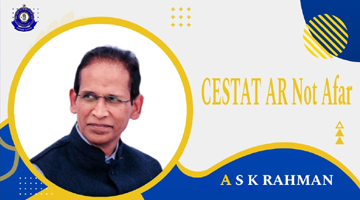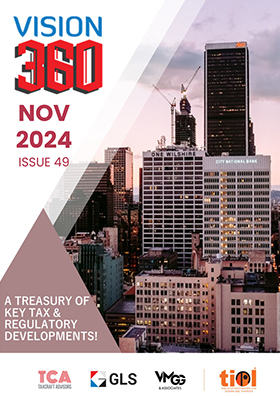Cabinet okays AIM 2.0; boosting entrepreneurship tops agenda
By TIOL News Service
NEW DELHI, NOV 26, 2024: THE Union Cabinet, has approved the continuation of its flagship initiative, the Atal Innovation Mission (AIM), under the aegis of NITI Aayog, with an enhanced scope of work and an allocated budget of Rs.2,750 crore for the period till March 31, 2028.
AIM 2.0 is a step towards Viksit Bharat that aims to expand, strengthen, and deepen India's already vibrant innovation and entrepreneurship ecosystem.
The approval underscores the government's commitment to fostering a robust innovation and entrepreneurship ecosystem in India. With India at rank 39 on the Global Innovation Index and home to world's third-largest start-up ecosystem, the next phase of Atal Innovation Mission (AIM 2.0) is expected to further enhance India's global competitiveness. The continuation of AIM will directly contribute to creating better jobs, innovative products, and high-impact services across sectors.
While building on the accomplishments of AIM 1.0, such as Atal Tinkering Labs (ATL) and Atal Incubation Centers (AIC), AIM 2.0 marks a qualitative shift in the mission's approach. Whereas AIM 1.0 involved implementing programs that built new innovation infrastructure to strengthen India's then nascent ecosystem, AIM 2.0 involves piloting new initiatives designed to fill gaps in the ecosystem and scaling successes through central and state governments, industry, academia and community.
AIM 2.0 is designed to strengthen India's innovation and entrepreneurship ecosystem in three ways: (a) by increasing input (i.e., ushering more innovators and entrepreneurs), (b) by improving the success rate or 'throughput' (i.e., helping more startups succeed) and (c) by improving the quality of 'output' (i.e., producing better jobs, products and services).
Two programs target increasing input to the ecosystem:
The Language Inclusive Program of Innovation (LIPI) to build innovation and entrepreneurship ecosystems in India's 22 scheduled languages for lowering entry barrier confronting innovators, entrepreneurs and investors who don't speak English. 30 Vernacular Innovation Centers will be established in existing incubators.
The Frontier Program to create customized templates for the innovation and entrepreneurship ecosystems of Jammu and Kashmir (J&K), Ladakh, the North Eastern states (NE), Aspirational Districts and Blocks where 15% of India's citizens live. 2500 new ATLs will be created for template development.
Four programs target improving the throughput of the ecosystem:
The Human Capital Development Program to create a system for producing professionals (managers, teachers, trainers) to build, operate, and maintain India's innovation and entrepreneurship ecosystem. The pilot will produce 5500 such professionals.
The Deeptech Reactor to create a research sandbox for testing ways of commercializing research-based deep tech startups that require significantly longer time and deeper investment to get to market. Minimum 1 Deeptech Reactor will be piloted.
The State Innovation Mission (SIM) to assist states/UTs with building a strong innovation and entrepreneurship ecosystem that focuses on their areas of strength. SIM will be a component of the NITI Aayog's State Support Mission.
The International Innovation Collaborations program to take India's innovation and entrepreneurship ecosystem international. Four areas of intervention are identified: (a) an Annual Global Tinkering Olympiad (b) creation of 10 Bi-lateral, multilateral engagements with advanced nations (c) as a knowledge partner, helping the United Nation's World Intellectual Property Organization (WIPO) spread the models of AIM and its programs (ATL, AIC) to the countries of the global south, and (d) anchoring the Startup20 Engagement Group of the G20 for India.
Two programs target improving the quality of output (jobs, products, and services):
The Industrial Accelerator program to increase industry involvement in scaling-up advanced startups. Minimum 10 Industry Accelerators in critical sectors will be created in Public Private Partnership (PPP) mode.
The Atal Sectoral Innovation Launchpads (ASIL) program to build iDEX-like platforms in central ministries for integrating and procuring from startups in key industry sectors. Minimum 10 launchpads will be built across key ministries.















